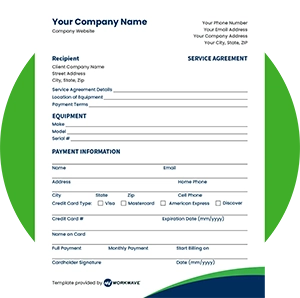Online visibility is key to the growth and success of any business, particularly those in the lawn care industry. With the majority of customers turning to online search engines to find local services, ranking your lawn care business at the top of search results is crucial.
This comprehensive guide to Lawn Care SEO is designed to equip you with the strategies and insights needed to elevate your online presence and drive more business through your digital doors. From understanding SEO basics to leveraging advanced optimization techniques, we’ll walk you through everything you need to know to make your lawn care business flourish online.
Understanding SEO Basics
What is Search Engine Optimization (SEO)?
Imagine you’re throwing the biggest lawn care party in town, but you forgot to send out the invites. SEO is like sending out those invites so everyone knows where and when the party is. In simpler terms, Search Engine Optimization, or SEO, is what you do to make sure your lawn care business shows up when people search for it online. It’s about making your website the go-to spot for anyone looking for lawn care services in your area. You want to be the first name that pops up, not the one buried on the third page of Google.
Why Does My Lawn Care Business Need SEO?
Now, you might be thinking, “My lawn care business is doing fine, why bother with SEO?” Here’s the deal: the way people find services has changed. Gone are the days when a flashy ad in the local paper would bring customers running. Today, if someone needs their lawn taken care of, they go straight to Google. If your business doesn’t show up on that first page for keywords around your local area, you’re missing out on a ton of potential customers.
SEO is your ticket to getting noticed. It helps you attract more visitors to your website without having to pay for ads. And not just any visitors, but the ones who are actively looking for the services you offer. Plus, it builds trust. When your business appears at the top of the search results, it’s like getting a nod of approval from Google, making potential customers more likely to choose you over your competitors.
Keyword Research for Lawn Care: The Foundation of Your SEO Strategy
Imagine if you knew exactly what your potential customers were thinking—what words they typed into Google when looking for lawn care services. That’s where keyword research comes in. It’s like having a crystal ball that shows you the specific terms and phrases people use when they’re searching for the services you offer.
Keyword research isn’t just about finding words; it’s about understanding the needs and the language of your potential customers. It helps you speak their language on your website, in your blog posts, and across your online content.
How to Find the Right Keywords
- Think Like Your Customer: Start by listing out the services you offer (e.g., lawn mowing, landscaping, aeration) and think about how your customers might search for these services. What would you type in if you were looking for lawn care services?
- Use Keyword Research Tools: Tools like Google’s Keyword Planner, Moz, or SEMrush can show you exactly what terms people are searching for and how competitive these keywords are. Look for keywords that have a decent search volume but not so competitive that you can’t rank for them.
- Check Out the Competition: See what keywords your competitors are ranking for. This can give you ideas for keywords you might have missed and help you understand the competitive landscape.
- Localize Your Keywords: Since lawn care is a local service, don’t forget to include location-based keywords. For instance, “lawn care services in [Your City]” or “best landscapers near me.”
Incorporating Keywords into Your Content
Once you’ve identified your keywords, the next step is to use them wisely. Sprinkle them throughout your website’s content, titles, meta descriptions, and even your blog posts. However, remember to keep it natural. The goal is to make your content informative and engaging, not to stuff it with so many keywords that it becomes difficult to read.
By carefully selecting and integrating the right keywords into your content, you’ll be on your way to attracting more of the right visitors to your website. Up next, we’ll explore how to enhance these efforts through on-page optimization techniques, ensuring your lawn care business not only attracts but also captivates and converts your website visitors.
Case Studies: How Lawn Plus went from $500K to $5 Million in a decade – with RealGreen

On-Page Optimization Techniques
With the right keywords in hand, it’s time to make your website irresistible to search engines and users alike. On-page optimization is your toolset for making your website not just visible, but also appealing to your prospective clients. It’s about fine-tuning the elements on your website to speak the language of search engines, while also delivering a great experience to your human visitors.
Crafting Compelling Content
First and foremost, content is king. But not just any content—it needs to be relevant, engaging, and valuable to your audience. Here’s how to get it right:
- Service Pages: Each service you offer should have its own dedicated page, filled with detailed descriptions, the benefits of choosing your service, and why your lawn care company is the best choice. These pages are the perfect place to incorporate your targeted keywords naturally.
- Blog Posts: Share your expertise by writing blog posts on topics like lawn maintenance tips, the best time to seed your lawn, or how to choose a lawn care provider. This not only helps with SEO but also establishes your authority in the lawn care industry.
Optimizing Your Website’s Structure
Your website’s structure plays a crucial role in SEO. Here’s what to focus on:
- URLs: Keep your URLs short, readable, and keyword-rich. For example, use /lawn-mowing-services instead of /services/123.
- Title Tags and Meta Descriptions: These are what show up in search results. Make them clear, concise, and include your main keywords. They should entice users to click through to your website.
- Headings and Subheadings: Use headings (H1, H2, H3) to structure your content clearly. They help search engines understand the hierarchy and importance of the content, and they make it easier for readers to skim.
- Internal Linking: A well-thought-out internal linking strategy helps search engines crawl your site more effectively and increases user engagement by providing them with easy access to related content. Use descriptive anchor text that gives users a clear idea of what they will find when they click a link. For example, link from your “Lawn Mowing Services” page to related services like “Seasonal Lawn Care” or helpful blog posts such as “Top 5 Lawn Mowing Tips for a Healthy Lawn.” This not only helps with SEO but also improves the user experience by making your site more navigable.
Enhancing User Experience
SEO isn’t just about pleasing search engines; it’s also about providing a great experience for your visitors.
- Mobile Responsiveness: With more people using mobile devices to search the web, your site must look good and function well on all screen sizes.
- Speed: A slow website can frustrate users and hurt your rankings. Use tools like Google’s PageSpeed Insights to find and fix speed issues.
- Images: High-quality images of your work can make your site more appealing. Optimize them by compressing for faster loading times and use descriptive file names and alt tags filled with relevant keywords.
On-page optimization is about making your website as welcoming and understandable as possible for both search engines and human visitors. By following these techniques, you’ll not only help your site rank higher but also provide a better experience for potential customers.
Off-Page SEO Strategies
While on-page optimization ensures your website speaks the language of both search engines and potential clients, off-page SEO strategies focus on increasing your website’s authority and reputation across the internet. This is crucial because search engines use these external signals to gauge the quality and relevance of your website. Here’s how to make your lawn care business stand out in the crowded digital space.
Building Quality Backlinks
- Content Marketing: Creating valuable and shareable content is a natural way to earn backlinks. Informative blog posts, how-to guides, and infographics about lawn care can encourage other websites to link back to your content as a resource.
- Local Partnerships: Collaborate with local businesses and organizations that complement your services, such as garden centers or home improvement stores, and explore cross-promotion opportunities. This can result in valuable local backlinks.
- Guest Blogging: Offer to write articles for reputable industry blogs or local community websites. This not only gets your brand in front of a new audience but also allows you to include backlinks to your website.
Leveraging Social Media
Engage actively on social media platforms by sharing your content, participating in community discussions, and showcasing your work. While social media links don’t directly influence search rankings, they increase your brand’s visibility and can drive traffic to your website, which indirectly benefits your SEO efforts.
Encouraging Customer Reviews
Online reviews are a powerful tool for improving your business’s online presence and trustworthiness. Encourage satisfied customers to leave positive reviews on platforms like Google My Business and Yelp. Responding to reviews, both positive and negative, shows that you value customer feedback and are committed to customer satisfaction. Streamline referrals for your lawn care business, Referral Assistant gives your customers an easy way to send referrals your way – and an easy way for you to boost your bottom line. Learn more here!
Learn More: 15 Best Landscaping and Lawn Care Marketing Strategies


Download Free Templates for Your Business
Use our free, downloadable templates to quickly create proposals, estimates, contracts, work orders, invoices and receipts for your field service business.
We’ve included templates for lawn care, landscaping, arbor care, irrigation, snow removal and pest control. Easily customize each form to create professional-looking documents.
Technical SEO for Lawn Care Websites
Technical SEO might sound daunting, especially if you’re not a tech wizard, but it’s essentially about making sure your website is designed in a way that search engines can easily understand and rank. Here are some key elements to focus on to ensure your lawn care website is technically sound:
1. Mobile Optimization
In today’s mobile-first world, your website must perform flawlessly on smartphones and tablets. Google predominantly uses mobile-first indexing, meaning it looks at your mobile site to determine rankings. Ensure your site is responsive, meaning it automatically adjusts to fit the screen size of any device.
2. Site Speed
A slow website can hurt your rankings and turn potential customers away. Use tools like Google’s PageSpeed Insights to check your site’s speed and follow the recommendations to improve it. This often involves compressing images, leveraging browser caching, and minimizing code.
Secure Sockets Layer (SSL)
SSL encrypts data transferred between your website and your visitors, making it secure. Google has confirmed that SSL is a ranking factor, so ensure your site uses HTTPS. This not only boosts your SEO but also builds trust with your visitors.
3. Clean and Structured Code
Search engines love websites that are easy to crawl and understand. Use schema markup to help search engines interpret the content of your pages more effectively. This can also enhance your presence in search results with rich snippets, such as star ratings for reviews, prices, or availability.
4. XML Sitemap and Robots.txt
An XML sitemap lists all the important pages of your website, making it easier for search engines to crawl. A robots.txt file tells search engines which pages not to crawl. Both are essential for guiding search engine bots through your site efficiently.
5. Avoiding Duplicate Content
Ensure each page on your website has unique content and use canonical tags to avoid duplicate content issues. This tells search engines which version of a page to consider the “master” version, preventing dilution of your SEO efforts.
By addressing these technical SEO elements, you ensure that your lawn care website has a strong foundation, making it more accessible to search engines and improving your overall online visibility.

Local SEO for Lawn Care Businesses
Local SEO is your secret weapon in attracting customers right in your backyard. It’s all about optimizing your online presence to appear in local search results, making sure that when someone in your area searches for lawn care services, your business shows up front and center. Here’s how to dominate the local search landscape:
Google My Business Optimization
Your Google My Business (GMB) profile is essentially your business’s listing on Google. It appears in Maps and local search results, providing potential customers with essential information at a glance.
- Claim and Verify Your Listing: Start by claiming your GMB listing and go through the verification process to prove you own the business.
- Complete Every Section: Fill out every part of your GMB profile, including business name, address, phone number, website, services, and hours of operation. The more complete your profile, the better.
- Use High-Quality Photos: Upload clear, high-quality photos of your team, equipment, and completed projects to showcase your professionalism and quality of work.
- Collect and Respond to Reviews: Encourage your satisfied customers to leave positive reviews on your GMB profile. Respond to all reviews, good or bad, to show you value customer feedback.
Local Keywords Optimization
Integrate local keywords—like “lawn care in [City Name]” or “best landscaper near me”—into your website’s content, titles, and meta descriptions. This helps Google understand where your business operates and match your site to local search queries.
Building Local Backlinks
Backlinks from reputable local websites can significantly boost your local SEO efforts. Participate in community events, sponsor local sports teams, or collaborate with other local businesses to get mentioned on their websites and social media.
Measuring and Analyzing SEO Performance
Understanding the impact of your SEO efforts is crucial for continual improvement and success. Here are key strategies to effectively measure and analyze your lawn care SEO performance:
Set Up the Right Tools
- Google Analytics: Tracks website traffic, user behavior, and conversion rates. It’s essential for understanding how visitors interact with your site.
- Google Search Console: Provides insights into your website’s presence in Google’s search results, including impressions, clicks, and average position for your keywords.
- SEO Platforms: Tools like SEMrush, Ahrefs, or Moz offer comprehensive analytics on backlinks, keyword rankings, competitor analysis, and more.
Key Performance Indicators (KPIs) to Track
- Organic Traffic: The number of visitors coming to your site from search engines. Increases in organic traffic indicate successful SEO.
- Keyword Rankings: The positions your website holds in search engine results pages (SERPs) for specific keywords. Higher rankings typically lead to more traffic.
- Conversion Rate: The percentage of website visitors who take a desired action (like filling out a contact form). It helps measure the effectiveness of your SEO in driving meaningful engagement.
- Bounce Rate: The percentage of visitors who leave your site after viewing only one page. A high bounce rate may indicate that your content isn’t matching the search intent.
- Backlinks: The number and quality of other websites linking to yours. More high-quality backlinks can improve your site’s authority and rankings.
Making Data-Driven Decisions
Use your analysis to inform your SEO strategy. If certain types of content are driving more traffic and engagement, consider producing more of that content. If some pages have high bounce rates, investigate and improve them. Continuously optimize based on your findings to enhance your website’s performance and SEO effectiveness.
By regularly measuring and analyzing your SEO performance, you can make informed decisions that lead to better rankings, more traffic, and ultimately, more customers for your lawn care business.
Common SEO Mistakes to Avoid
SEO is a dynamic and complex field, and while striving to improve your online presence, it’s easy to fall into certain traps. Here are some common SEO mistakes lawn care businesses should avoid:
1. Neglecting Local SEO
Many lawn care businesses overlook the power of local SEO, missing out on potential customers right in their own backyards. Ensure your Google My Business profile is optimized, your NAP (Name, Address, Phone number) information is consistent across the web, and you’re targeting local keywords in your content.
2. Ignoring Website Speed and Mobile Usability
Users expect quick-loading websites that are easy to navigate on any device. Ignoring site speed and mobile usability can not only harm your SEO but also frustrate potential customers, driving them away.
3. Keyword Stuffing
While keywords are essential, overusing them (keyword stuffing) can lead to penalties from search engines and a poor user experience. Always aim for natural language that provides value to your readers.
4. Overlooking the Importance of Content Quality
Content is a cornerstone of SEO, but producing low-quality, thin, or duplicated content can hurt your rankings. Focus on creating valuable, unique content that addresses your audience’s needs and questions.
5. Forgoing Measurement and Analysis
Not measuring the impact of your SEO efforts is like sailing without a compass. Regularly analyze your SEO performance using tools like Google Analytics and Google Search Console to understand what’s working and what isn’t.
6. Building Low-Quality Backlinks
Not all backlinks are created equal. Low-quality or spammy backlinks can negatively impact your SEO. Focus on earning high-quality backlinks from reputable sites in your industry or local area.
7. Failing to Update Your Website
An outdated website can negatively affect your SEO and user experience. Regularly update your content, design, and technology to meet current best practices and user expectations.
By avoiding these common SEO mistakes, you can ensure your lawn care business not only ranks well in search engines but also attracts and retains more satisfied customers.

Staying Updated with SEO Trends
The digital marketing world is in constant flux, with search engines regularly updating their algorithms and ranking factors. For your lawn care business to thrive online, staying abreast of these changes and adjusting your strategies accordingly is vital. Here are ways to keep your SEO knowledge fresh and your tactics effective:
- Follow Industry Leaders and Publications: SEO thought leaders and digital marketing publications are always on the pulse of the latest trends and algorithm updates. Regularly reading blogs, listening to podcasts, and following social media accounts from sources like Moz, and Search Engine Journal can provide valuable insights and tips.
- Participate in SEO Forums and Online Communities: Joining forums and online communities, such as Reddit’s r/SEO or Digital Point, can be a great way to learn from others, ask questions, and stay informed about the latest SEO strategies and tools. Engaging with a community of peers can also offer support and new ideas.
- Attend Webinars and Conferences: Although time-consuming, attending SEO and digital marketing conferences, either virtually or in person, can provide deep dives into the latest trends and best practices. They also offer networking opportunities with other professionals who can share their experiences and advice.
- Experiment and Learn from Your Own Data: One of the best ways to understand SEO is through hands-on experience and experimentation. Test new strategies on your website, analyze the results, and learn what works best for your specific audience and business model.
- Subscribe to SEO Newsletters: Many SEO platforms and influencers offer newsletters that summarize the latest news, trends, and tips in the industry. Subscribing to these can provide concise, regular updates right to your inbox, making it easier to stay informed.
By committing to ongoing education and staying informed about the latest SEO trends, you can ensure your lawn care business not only adapts to the digital landscape but leads the pack in online visibility and customer engagement.
Grow Your Business’s Online Presence With RealGreen’s Lawn Care Marketing Software
RealGreen’s Lawn Care Marketing Software is a comprehensive solution tailored for the lawn care industry, designed to streamline operations and supercharge your online marketing efforts. By integrating customer relationship management (CRM), automated email marketing, and reputation management, it offers a unified platform to enhance customer engagement, retention, and brand visibility.
Ready to see how RealGreen’s Lawn Care Marketing Software can transform your business? Request a free demo today and explore the comprehensive suite of features designed to elevate your online presence and streamline your operations. Contact us now to discover how we can help you grow your lawn care business, enhance customer engagement, and stay ahead in the competitive digital landscape.
FAQs
Why is SEO important for my lawn care business?
SEO (Search Engine Optimization) is crucial for your lawn care business as it helps your website rank higher in search engine results pages (SERPs). This increased visibility means more potential customers can find your business online, leading to more inquiries and ultimately more sales. With effective SEO strategies, you can outrank your competitors and establish your business as a trusted authority in the lawn care industry.
How can I choose the right keywords for my lawn care website?
Choosing the right keywords involves understanding your target audience and their search intent. Start by brainstorming common terms related to lawn care, then use keyword research tools to identify relevant keywords with high search volume and low competition. Focus on long-tail keywords that are specific to your services, such as “organic lawn fertilization services in [your city].” Additionally, analyze your competitors’ keywords to uncover new opportunities.
How long does it take to see results from SEO efforts for my lawn care business?
The timeline for seeing results from SEO efforts can vary depending on various factors, such as the competitiveness of your industry, the quality of your website, and the effectiveness of your SEO strategies. Generally, it can take several months to start seeing significant improvements in your search rankings and organic traffic. However, with consistent effort and a well-executed SEO plan, you can gradually climb the search engine rankings and achieve sustainable growth for your lawn care business over time.
Recent Posts
Starting a Mosquito Control Business: How to Sell and Add Mosquito Control Services
RealGreen Announces Partnership with Waypoint Analytical Will Offer Soil Testing and Analytics Integration for Service Assistant 5
How A Lawn Care and Pest Control Company Grew Their Business Using RealGreen’s Automated Marketing Assistant® and Customer Assistant® Websites

Shayla started at WorkWave in the marketing department in August 2022. As Senior Product Marketing Manager for RealGreen by WorkWave, Shayla spends her days researching the lawn and landscape industry, strategizing go-to-market efforts, and building relationships with customers to better serve and communicate.

